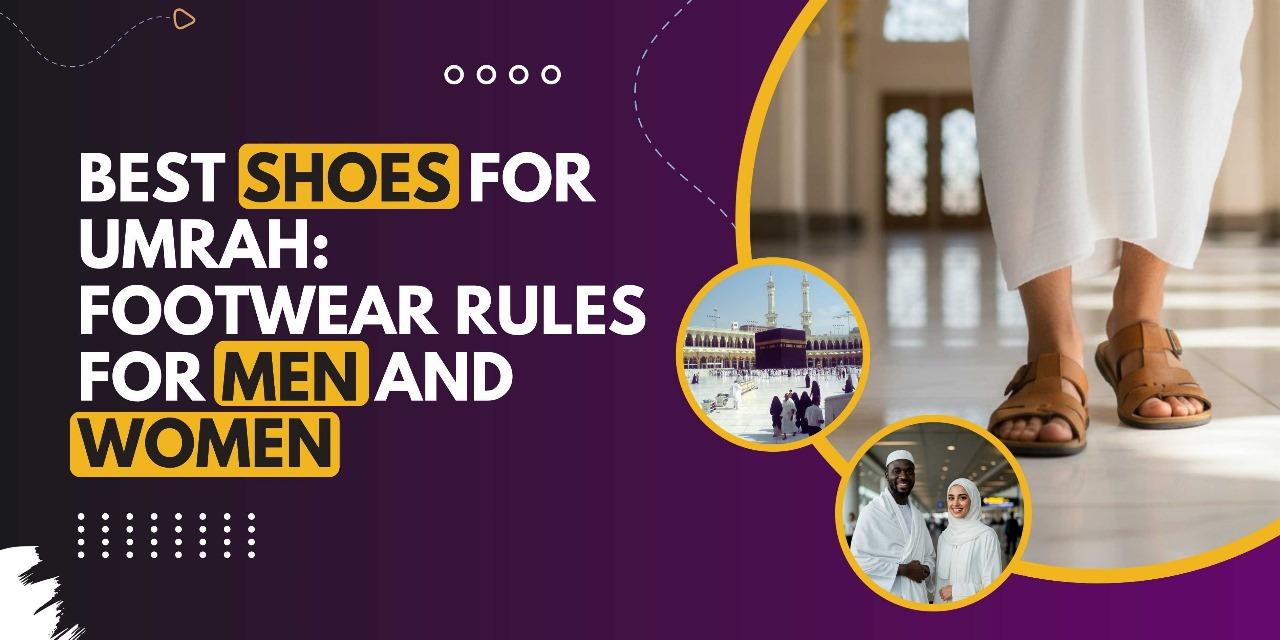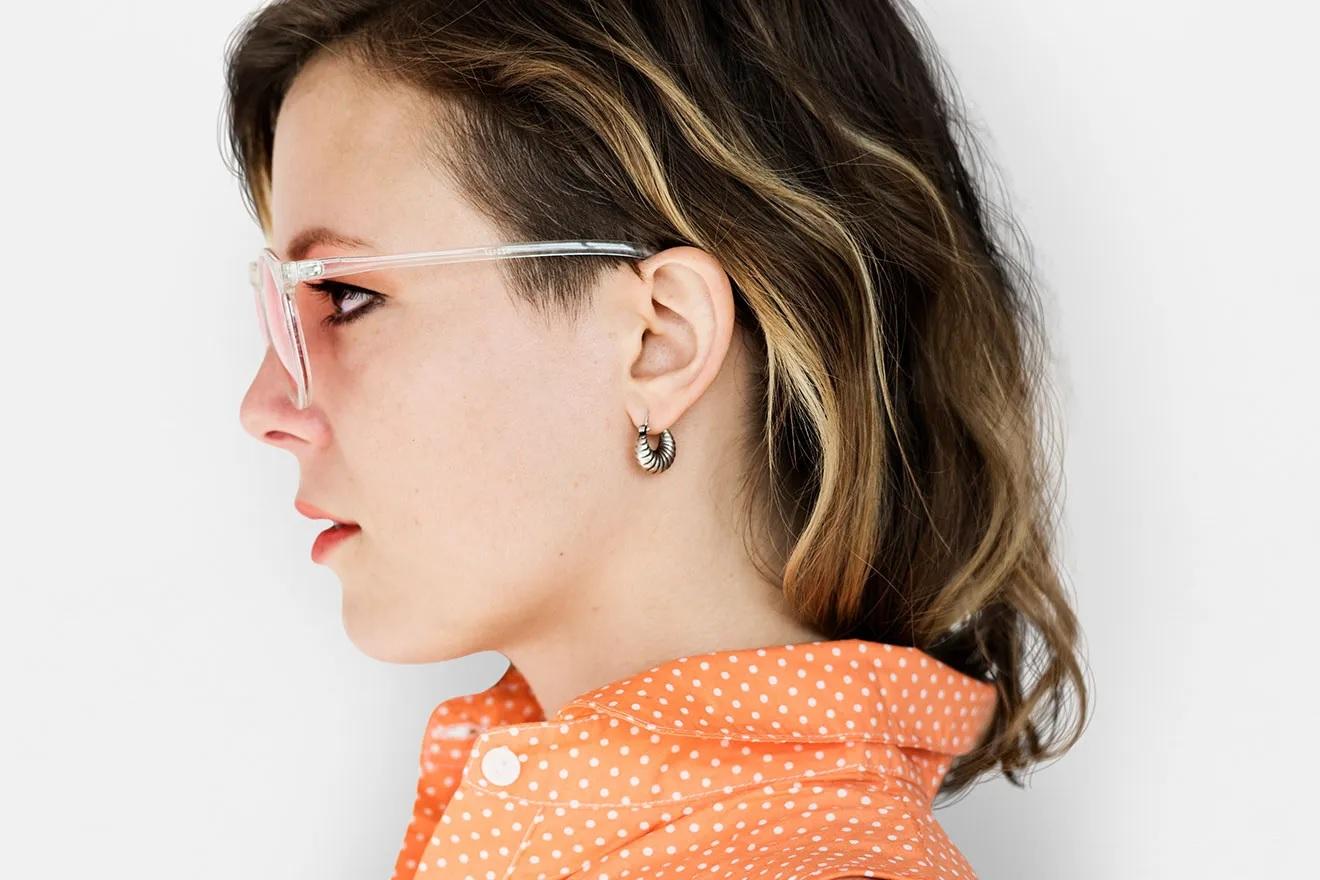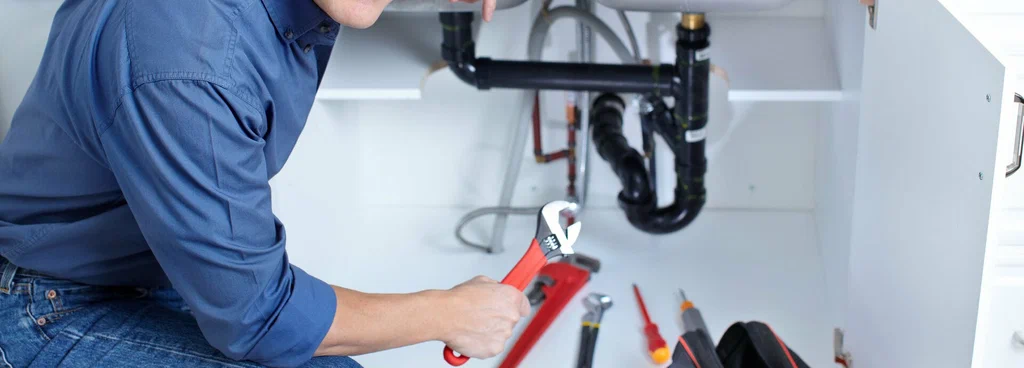Best Shoes for Umrah: Footwear Rules for Men and Women

Before performing Umrah, you may be wondering how much walking I will do on this journey? And what kind of shoes should I wear that are correct while wearing Ihram and do not cause pain afterwards?
The best shoes for Umrah should be clean, simple and comfortable. Sandals for men should be open, not covering the ankles or the top of the feet. While shoes for women should be modest and covered but still soft and comfortable to walk in it's better for them.
Every step of Umrah is part of worship. From circling the Kaaba seven times in anti-clockwise direction (Tawaf) to walking between Safa and Marwah, pilgrims usually walk 10 to 15 kilometers per day. So it's a good idea to choose shoes that are sturdy and easy to wear while adhering to Islamic principles, so that your heart can focus on worship — not pain or blisters.
What Kind of Shoes Can You Wear During Umrah?
When you go for Umrah, your shoes should be comfortable for long walks and also follow the rules of Ihram.
According to the Saudi Ministry of Hajj and Umrah, most people walk 10 to 15 kilometers every day - from performing Tawaf and Sa'i to walking between their hotels for Umrah and Masjid Al-Haram. Therefore, the shoes should be good for walking and also correct in Islam.
A Hadith is narrated:
A person stood up and asked, "O Allah's Apostle! What clothes may be worn in the state of Ihram?" The Prophet (PBUH) replied, "Do not wear a shirt or trousers, or any headgear (e.g. a turban), or a hooded cloak; but if somebody has no shoes he can wear leather stockings provided they are cut short off the ankles, and also, do not wear anything perfumed with Wars or saffron, and the Muhrima (a woman in the state of Ihram) should not cover her face, or wear gloves."
Reference: Sahih al-Bukhari 1838
This rule is that all pilgrims should be kept simple before Allah.
Men's shoes for Ihram
Men should wear sandals that do not cover the ankles or the top of the feet. The heel can be slightly covered for support that is fine.
Classical scholars like Ibn Qudama (in Al-Mughni, vol. 3, p. 216) and the Standing Committee for Islamic Research and Ifta (Fatwa No. 36863) have also said the same - the idea is to be simple, not covered up.
But if he wears it by mistake or out of necessity, he should take it off and pay fidya, as stated in the Holy Quran. But still, Allah places only as much burden on man as he can bear. However, if you are suffering from a life-threatening illness or have a problem that requires you to wear shoes or socks, then it is permissible. However, it is still strongly recommended that you first consult your respective Imam regarding this matter.
Acceptable forms of fidya:
Ransom options:
Slaughter a goat in Mecca and give it to the poor, or
Fast for three days, or
Feed six poor people (approximately 1.5 kg of food each).
Women’s Shoes for Ihram
For women, this is easy. Women may wear closed shoes or sandals, as long as they are clean and modest.
They do not need to show their feet while in Ihram - this is confirmed by Imam An-Nawawi (Sharh Muslim 8/127), who said that the ruling on shoes is only for men.
Best choice for women:
Soft shoes or boots for walking long distances.
Flat sandals with cushioning for everyday use.
Comfortable shoes for ablution (wudu) and prayer.
A 2024 study by the Pilgrim Experience Foundation found that about 78% of female pilgrims prefer lightweight shoes for the Sa'i walk - because they provide better grip on the marble floor.
Can you wear the same shoes for the mosque and the Kaaba?
Yes, you can - but only if they are clean and respectful.
Shoes should never be taken inside prayer spaces, but many pilgrims carry them in a small shoe bag during Tawaf or Sa'i.
To keep everything neat and tidy:
Use a small shoe bag and write your name on it.
Don't leave your shoes lying around the entrances - put them neatly in a rack or keep them in the courtyard.
Clean the soles often, as marble and the exteriors collect dust very quickly.
According to the General Presidency for the Affairs of the Two Holy Mosques (2023), losing shoes is one of the most common minor problems during a busy Umrah. A simple shoe bag with your name on it can save a lot of trouble.
What happens if you wear the wrong shoes?
If you wear the wrong shoes during Ihram, it is a minor mistake (called Makhlafa Saghira).
If it is accidental and you fix it quickly, there is nothing wrong with it.
But if one does it intentionally or wears them for a long time, then fidya (a small expiation) is required, which is either slaughtering a goat, fasting for three days, or feeding six poor people.
The Saudi General Presidency for the Affairs of the Two Holy Mosques says that most pilgrims are unaware of the rules and usually only receive a reminder, not a punishment.
Practical tips for pilgrims
1. Break in new shoes before traveling.
Walk around your new shoes at home for a few days before Umrah.
The Saudi Journal of Sports Medicine (2022) states that new shoes often cause blisters - one of the three main causes of foot pain during Umrah and Hajj.
2. Protect against blisters and fatigue
Use foot tape or blister patches when performing Tawaf or Sa’i. Soft insoles with EVA cushioning help reduce the hard shock from the marble floor.
3. Carry a shoe bag.
Keep a small shoe bag in your ihram belt or bag. The Ministry of Hajj Pilgrim Care Manual (2023) also recommends that you stop losing your shoes when you walk between prayers.
4. Choose the right fit.
Your shoes should have a little extra space - one toe in front.
Feet get bigger after walking so much (about 20,000 steps per day, Makkah Route Authority, 2024).
5. Avoid synthetic leather in hot weather.
It is better to choose mesh, foam, or soft natural leather. They allow your feet to breathe and prevent odors. If you go for Umrah in June or any other summer month, the heat can reach more than 40 ° C, so breathability is really important.
Conclusion
Choosing good shoes for Umrah is not only about comfort, but also about following the Shariah rules. Men should wear open sandals that reveal the ankles and upper part of the feet. Women can wear simple, closed shoes without any fragrance or decoration.
Most people walk 10 to 15 kilometers a day during Umrah, so comfort and cleanliness are very important. Shoes should be comfortable, light, and not painful.
If someone makes a mistake with their shoes, it is not the end of the world - they can make atonement, such as fasting, feeding the poor, or making a small sacrifice.
Umrah is not about looking beautiful or showing off. It is about peace of mind. When your feet do not hurt and your mind is free, every step in Mecca and Medina becomes a moment of prayer, love, and humility before Allah.







